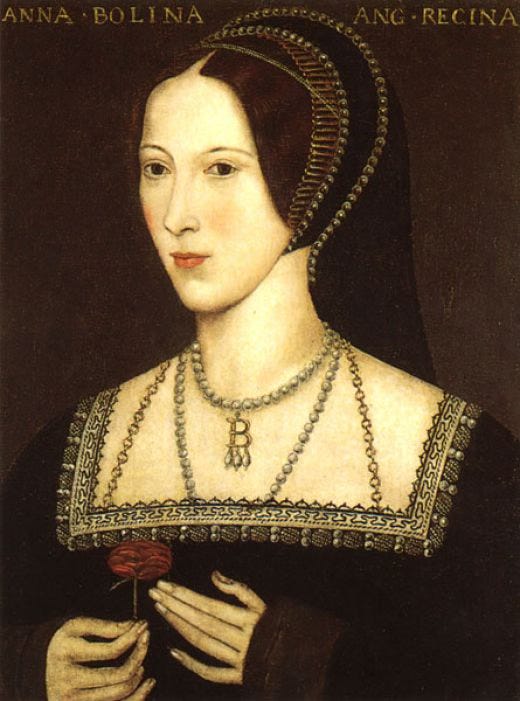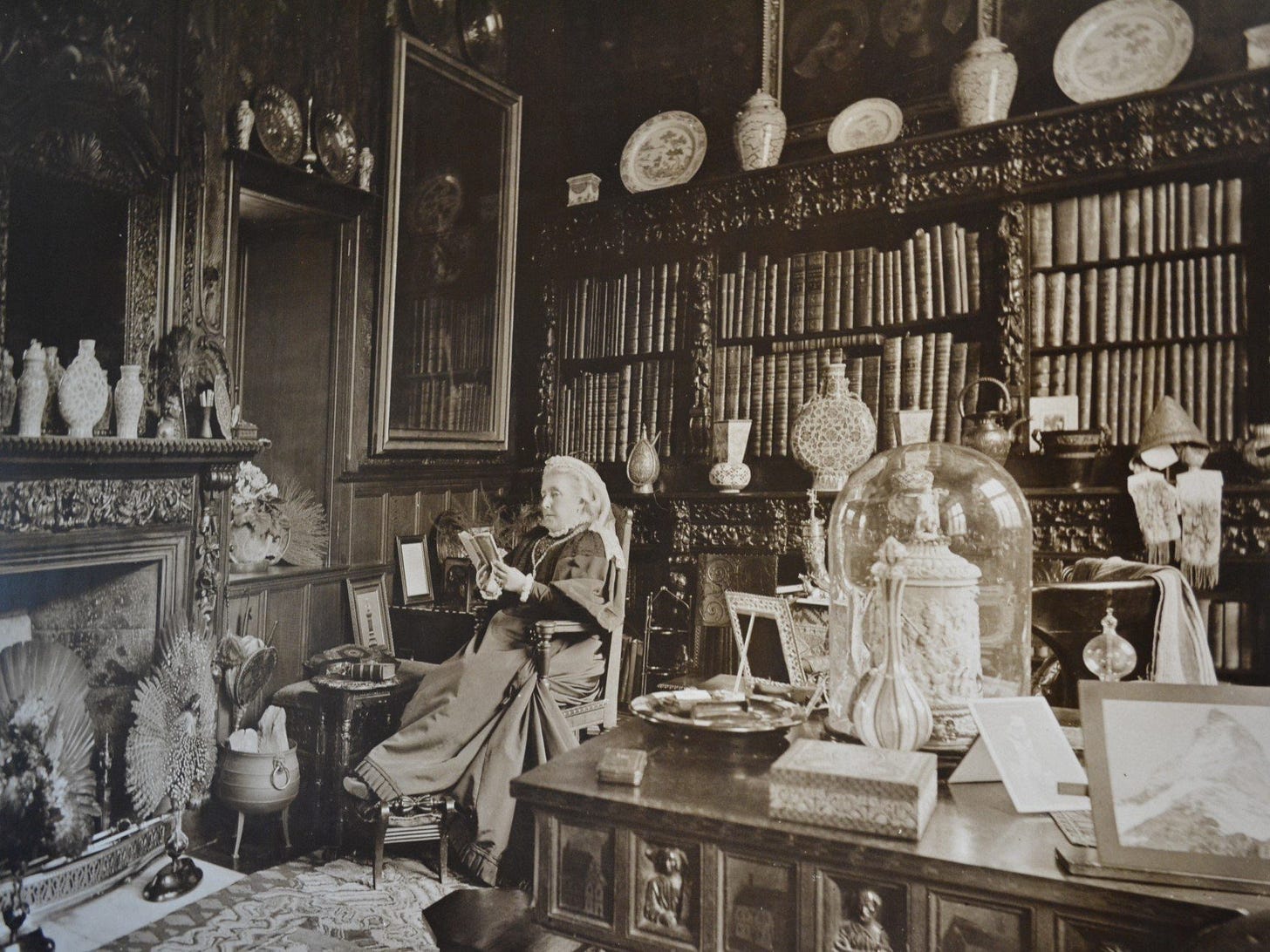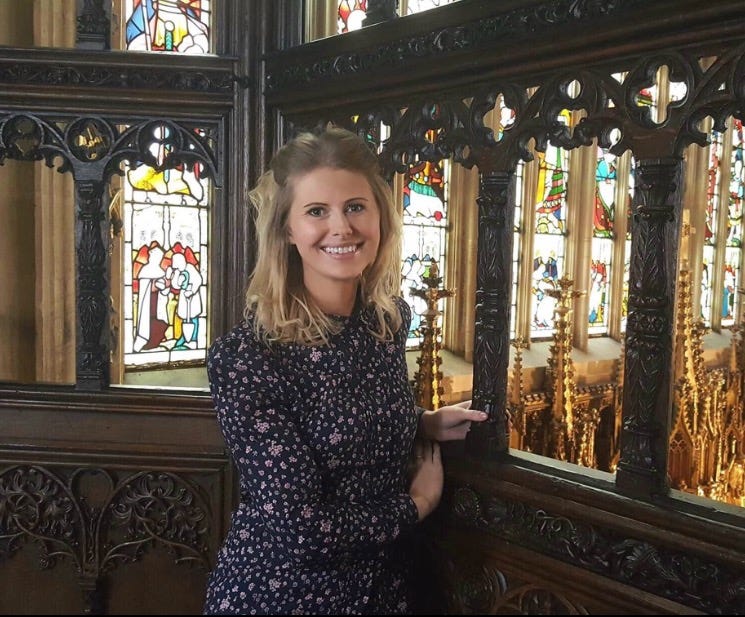The Wonderful Women of Sudeley Castle
The many women of Sudeley Castle who lived there, worked there, and inspired me.
Back in 2012, my 16-year-old self began volunteering at Sudeley Castle in Gloucestershire. I had only recently left school and was in a pretty dark place. History (especially the Tudors), was the only thing which got me out of the house and offered some much needed escapism.
As the resting place of Katherine Parr, Henry VIII’s sixth wife, Sudeley Castle is steeped in Tudor history, and it was relatively close by to where I grew up. Consequently, my amazing mum dedicated herself to driving me over an hour each way to Sudeley Castle every week, so that I could immerse myself in my passion for the past and whittle on about the Tudors to anyone who would listen.
I was fortunate to volunteer during Sudeley Castle’s quincentenary celebrations of Katherine Parr’s birth, so the summer was littered with special events such as reenactments and talks from esteemed historians and writers, such as Alison Weir and Michael Hirst, (who wrote my favourite show of all time, ‘The Tudors’!).
Yet as much as this fed my love for the 16th century, my time at Sudeley Castle also opened my eyes to the lives of many remarkable women who left their mark on the castle throughout the centuries. Alongside Katherine Parr, my fascination for these ladies undoubtedly cemented by interest in women’s history, which continues to flourish today!

Their stories made me realise just how influential, wonderful, yet sadly overlooked, many historical women are, which spurred me on in my determination to find out more about them. For International Women's Day earlier this month, Sudeley Castle posted about the famous women associated with the estate on their social media channels. This in turn, inspired me to write this post about them, in the hope that you lovely readers will learn about their extraordinary legacies, and perhaps think of them when you follow in their footsteps and visit the wonders of Sudeley Castle for yourselves.
Goda
The daughter of King Æthelred the Unready, Goda was given the manor house and estate of Sudeleagh in 969AD, upon her marriage to Walter de Maunt. Unfortunately we do not know a lot about Goda and her time at Sudeleagh, yet she was always the first figure mentioned by tour guides at the Castle. It struck me even then how remarkable it was, that the first significant figure in Sudeley Castle’s illustrious past was a woman, even if traces of her residency have been lost over time.
Empress Matilda
Now, sadly Empress Matilda never resided at Sudeley Castle. Nor do I think she ever visited it. However, she did still play a significant (if absent) role in the estate’s history. The Anarchy of 1135-53, saw a bloody civil war play out in the Angevin empire between Empress Matilda and her cousin, King Stephen. Both battled for the throne, and both drew supporters from the English nobility.
John de Sudeley supported Matilda’s cause. However, in 1139 Stephen seized Sudeley Castle and transformed it into a royal garrison. Although John’s estate eventually defended Stephen’s cause, it always struck me that John championed the right for a woman to wear the crown, and his home of Sudeley Castle symbolised his allegiance to Matilda’s claim.
Lady Eleanor Boteler
Anyone who has followed recent debates surrounding Richard III and the Princes in the Tower, has probably heard of Eleanor Boteler. When Richard III assumed the throne in 1483, he claimed that Eleanor had been married to his brother and predecessor, King Edward IV. As their secret union was binding and had never been annulled, Richard claimed that Edward’s subsequent marriage to Elizabeth Woodville was therefore invalid, thus making their sons - (the Princes in the Tower) - illegitimate and unable to succeed to the throne.
Eleanor Boteler had passed away by 1483, so she was unable to confirm or deny Richard’s allegations. You could argue that Eleanor’s silence regarding her supposed royal marriage speaks a thousand words, because instead of trying to oust Elizabeth Woodville and proclaim herself to be the true queen, Eleanor lived a quiet life which was heavily associated with Sudeley Castle, for the estate belonged to her father-in-law, Ralph Boteler, Baron Sudeley.
Today, visitors to Sudeley Castle can explore a wonderful exhibition about Eleanor Boteler; her links to the estate, and the posthumous role she played in the drama of Richard III’s reign.
Anne Boleyn
Katherine Parr wasn’t the only wife of Henry VIII to have links with Sudeley Castle. During their summer progress of 1535, Henry VIII and his second queen, Anne Boleyn, resided at Sudeley Castle for several days, with Thomas Cromwell and other members of the court staying in nearby Winchcombe Abbey.

It was during Anne and Henry’s stay at Sudeley Castle that a momentous moment in the dissolution of the monasteries occurred. Anne Boleyn decided to send her chaplains to Hailes Abbey, which was situated very near to Sudeley Castle.
Since 1270, the Abbey claimed to house a portion of Christ’s blood, which reportedly cured the sick and even raised the dead! Subsequently, Hailes Abbey became a major pilgrimage site over the centuries and the monks amassed a small fortune as a result. The events of 1535 triggered the decline and eventual end to this enterprise, for Anne’s chaplains soon denounced Christ’s blood to be nothing more that duck’s blood - (although it was later discovered to be honey coloured with saffron).
Regardless of the true substance, Hailes Abbey was condemned for its ‘‘abomynable abuse” and proved to be a major propellant in the later dissolution of the monasteries. Thus, Anne Boleyn’s visit in 1535 marked another major chapter in Sudeley Castle’s history, and arguably England’s history as a whole!
Katherine Parr & Lady Jane Grey
Katherine Parr is undoubtedly Sudeley Castle’s most famous resident. After Henry’s death in January 1547, Katherine swiftly (and scandalously!) married her fourth husband and Sudeley’s current owner, Sir Thomas Seymour.
Discovering that she was expecting her first child, Katherine’s happiness soon soured upon stumbling across Seymour in a compromising situation with her stepdaughter, Princess Elizabeth. Sending Elizabeth away and desperate for a change of scenery, Katherine moved to Sudeley in the summer of 1548, where she was accompanied by Seymour’s ward and royal cousin, Lady Jane Grey.
Jane’s time with Katherine was probably the happiest moment in her short life. The two women enjoyed learning, and Katherine again demonstrated her loving and maternal nature to the young girl.
Tragically this all came to an abrupt end in September 1548, after Katherine gave birth to her daughter and quickly developed puerperal fever. Heartbroken and betrayed by the husband she loved, Katherine passed away on 5th September 1548. Her funeral was held on the estate in St Mary’s Church, which was the first Protestant royal funeral in England. Lady Jane Grey acted as chief mourner, and watched as her beloved Katherine was buried by the altar.
This marked the end of Jane’s time at Sudeley, yet this wasn’t the end of Katherine’s story. After the Civil Wars a hundred years later, Sudeley Castle was left to ruin for many years. Katherine’s tomb was lost, until farmers stumbled across her grave in 1782. Several times poor Katherine’s peace was disturbed, as various sightseers wrenched open her coffin to gaze upon the well-preserved body of a Tudor queen. Her hair, fragments of her clothes, and even a tooth was snatched from her corpse, before poor Katherine was finally laid to rest in the beautiful Victorian tomb you see today.

Even 500 years after her death, Katherine Parr continues to play a vital role in Sudeley’s story, with many visitors (including myself!), flocking to pay their respects to this remarkable woman and wander through the halls in which she lived. You can also see Katherine’s hair and tooth for yourselves, if you so wish!
Elizabeth I
1592 witnessed Elizabeth I’s third visit to Sudeley Castle, which was them owned by Lord Chandos. Celebrating the defeat of the Spanish Armada, Elizabeth’s visit to Sudeley Castle formed part of the summer progress.
Receiving a visit from the Queen was meant to be a huge honour for the aristocracy - yet not everyone saw it that way! Lord Chandos was probably relieved to see the back of Queen Elizabeth, after her visit in 1572 was said to be one of the longest parties in history! Financially ruinous, Queen Elizabeth’s visits were not always warmly welcomed by her courtiers, with Lord Chandos being one of her ‘victims’…
Mrs Cox
A quick shout-out to the housekeeper Mrs Cox, who broke King George III’s fall down the Octagon Tower in 1788! History would have been very different if Mrs Cox hadn’t been there to save her monarch from significant injuries. She was said to have been well-rewarded for her services to the crown. Visitors can still marvel at the height of the Octagon Tower for themselves - just look out for the tower next to the ruins, which still bears the evidence of a cannonball which blasted through the stone during the Civil War, and sadly took off a soldier’s head!
Emma Dent
After Katherine Parr, Emma Dent is probably the most significant and influential woman to live at Sudeley Castle. Married to John Coucher-Dent, the couple inherited the estate in 1856 upon the death of John’s uncles.
Emma outlived her husband by several years, and it was during her widowhood that Emma proved herself to be a hard-working and dedicated chatelaine to Sudeley Castle and its estate. She worked tirelessly to improve the welfare of the local community, including the installation of piped water in 1887 to celebrate Queen Victoria’s Golden Jubilee. Emma was also an avid collector of autographs; collecting the signatures of the numerous Victorian ‘celebrities’ who wrote to her, which visitors can still see today.
After making so many improvements to Sudeley Castle and Winchcombe, and playing a major role in preserving the castle for future generations, it’s unsurprising that Emma Dent continues to be remembered and honoured 200 years later.
Elizabeth, Lady Ashcombe
Lady Ashcombe is the current owner of Sudeley Castle. Like Emma before her, Lady Ashcombe has also done a lot to preserve, protect and promote Sudeley Castle over the last 50 years. It was during her first marriage to March Dent-Brocklehurst that Sudeley opened its doors to the public for the first time. The couple also carried out major refurbishments to ensure Sudeley Castle’s survival today, so we have a lot to be thankful to Elizabeth for!
On a personal note…
To end my celebration of the women associated with Sudeley Castle, I would like to make a very personal homage to two women who were huge inspirations to me during my time as a volunteer.
The first is Dr Nicola Tallis, who I was very lucky to work alongside in 2012. Nicola’s passion for history encouraged my own, with her commitment and love to her work continuing to amaze me as much now as it did when I first met her. It’s been a pleasure to watch Nicola grow and become the admired and super talented historian she is today, and I thank her for all the chats, support, inspiration, and laughs she provided me during our time at Sudeley together.
Lastly, I wish to pay tribute to Dyll. Dyll had worked as a Room Guide at Sudeley Castle for many years, and it was an immense privilege to be taken under her wing. I remember the many hours we spent together; chatting, laughing, and setting the world to rights. She taught me so much - not just about history, but also how to be a better person. She was a huge influence on the woman and historian I am today.
I loved Dyll for championing me so much during those hard times. She was a true icon and friend, who I miss greatly. I think of her often, and hope that she’s smiling down on me and proud of what little old me has achieved.












A really great piece of writing and I enjoyed it.
What a lovely and heartfelt tribute to a wonderful place and the women associated with it